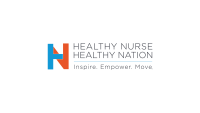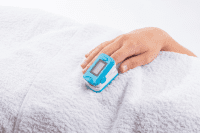This article is sponsored content supplied to American Nurse Journal by FirstNet, and is not peer reviewed.
The need for nurses to make their own health a priority is critical.
As a nurse, it’s all too common to see colleagues who are afraid to take a lunch break; afraid to take a moment for themselves; or even too afraid to sit down. So often, our brains are rapidly firing for our patient’s needs. And we push our own needs aside. At the heart of this is our deep-seated call to care for people.
But there is a growing need to help nurses prioritize self-care and work toward a better balance.
This is an urgent need to help them avoid the dangers of stress, depression, and anxiety that often come with the job. About 68% of nurses have reported that they put the health, safety, and wellness of their patients before their own needs.1 And this can lead to burnout.
Solutions and support
That’s why the FirstNet® Program at AT&T has gone beyond its commitment to build out a network for first responders by helping to deliver solutions that support the health and well-being of workers on the front lines.
The FirstNet Health and Wellness Program is supporting evidence-based solutions to address the health, wellness, and resiliency of first responders and front line healthcare workers who support public safety.2
When it feels as though the only option is to jump from task to task, take a moment and breathe. Letting ourselves seize the opportunities to refresh, even for a moment, can have a profound impact. This can include prioritizing exercise, joining a challenge group and practicing mindfulness. The chart below provides additional tips.
| Physical tips | Mindfulness tips | Positive energy tips |
|
|
|
|
|
|
|
|
|
|
|
Organizations also can help support their nurses in strategic and well-planned ways, such as incorporating the American Nurses Association’s Healthy Nurse Healthy Nation (HNHN) program into their healthcare culture.
And they can get their nurses out of the hospital for meetings, provide hydration and healthy snacks, and relaxation rooms to support the culture of wellness.3
Embracing wellness
The benefits of embracing the wellness of nurses can have a positive impact on the nurse personally and professionally.4 Just taking on one wellness practice, such as mindfulness, can improve the quality of the workplace and decrease nursing burnout and turnover rates.
Nurses practicing mindfulness have reported a 28% decrease in stress levels.4 This decrease in stress levels is estimated to result in 62 minutes of increased productivity and a savings of approximately $3,000 in healthcare costs annually.4
So, nurses, it’s ok to fill up your cup with the tools that improve your well-being—so you can be better prepared to help others.
=
FirstNet and the FirstNet logo are registered trademarks and service marks of the First Responder Network Authority. All other marks are the property of their respective owners.
References
- American Nurses Association (2017). Executive Summary: American Nurses Association Health Risk Appraisal. Retrieved January 27, 2022, from nursingworld.org
- FirstNet Health and Wellness Program for first responders. FirstNet. (n.d.). Retrieved February 23, 2022, from https://www.firstnet.com/community/health-and-wellness.html
- Solomon, A. (2017). How employers can help keep nurses healthy – viewing blog post. Healthy Nurse, Healthy Nation™. Retrieved February 23, 2022, from https://engage.healthynursehealthynation.org/blogs/8/41
- Belton, S. (2018). Caring for the Caregivers: Making the Case for Mindfulness-Based Wellness Programming to Support Nurses and Prevent Staff Turnover. Nursing Economics, 36 (4): 191-194.

















